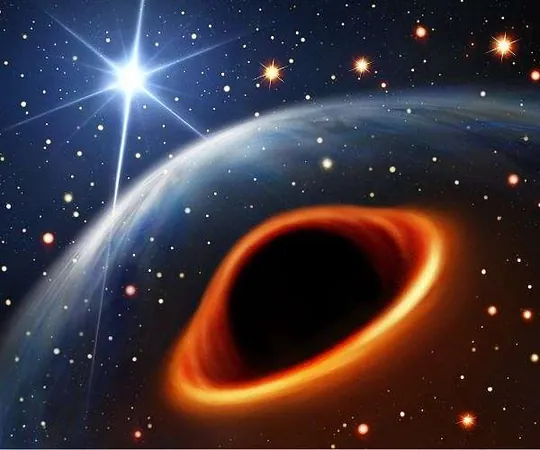
Unveiling the Secrets of Neutron Stars: How Their Deformations May Create Ripples in Space-Time
2025-01-13
Author: Nur
Why This Research Matters
The study of neutron star deformations is more than just an academic pursuit—it's pivotal for the detection of continuous gravitational waves. These faint waves represent persistent ripples in the universe, and capturing them poses a significant challenge. Facilities like the Laser Interferometer Gravitational-Wave Observatory (LIGO) are on the front lines of this research, employing highly sensitive equipment honed to pick up on expected frequencies and nuances of these elusive signals. Finding continuous gravitational waves could transform our understanding of the cosmos and offer unprecedented insights into the nature of neutron stars, which serve as some of the most extreme environments in the universe next to black holes.
Similarities with Solar System Geology
Researchers have noted remarkable similarities in deformation mechanisms between neutron stars and various geological features of our solar system. For instance, the icy moon Europa, with its linear patterns possibly caused by tectonic movements above a subsurface ocean, provides an intriguing parallel. Similarly, Saturn’s Enceladus features stripes reminiscent of tiger patterns, and Mercury displays unique curved structures that suggest a history of significant geological events.
The Anisotropic Mystery: A Closer Look at Crusts and Gravitational Waves
By examining Earth’s inner core, which shows directionally dependent shear properties or anisotropy, scientists gain insights into the possible behaviors of neutron star crusts. If neutron star surfaces manifest similar anisotropic characteristics, their irregularities could become significantly more noticeable with increased rotation speeds. This observation could illuminate maximum rotation thresholds and minimal deformations observed in some neutron stars, contributing to our broader understanding of stellar physics.

 Brasil (PT)
Brasil (PT)
 Canada (EN)
Canada (EN)
 Chile (ES)
Chile (ES)
 Česko (CS)
Česko (CS)
 대한민국 (KO)
대한민국 (KO)
 España (ES)
España (ES)
 France (FR)
France (FR)
 Hong Kong (EN)
Hong Kong (EN)
 Italia (IT)
Italia (IT)
 日本 (JA)
日本 (JA)
 Magyarország (HU)
Magyarország (HU)
 Norge (NO)
Norge (NO)
 Polska (PL)
Polska (PL)
 Schweiz (DE)
Schweiz (DE)
 Singapore (EN)
Singapore (EN)
 Sverige (SV)
Sverige (SV)
 Suomi (FI)
Suomi (FI)
 Türkiye (TR)
Türkiye (TR)
 الإمارات العربية المتحدة (AR)
الإمارات العربية المتحدة (AR)